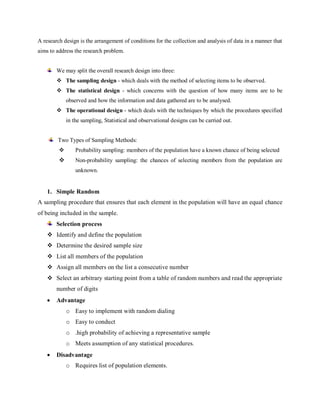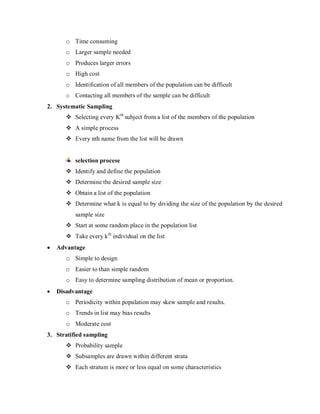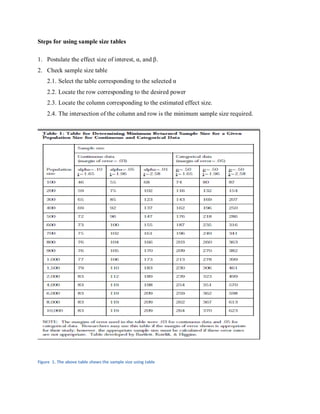The document discusses various sampling methods in research design, outlining both probability and non-probability sampling techniques. It details processes, advantages, and disadvantages of methods such as simple random, systematic, stratified, and cluster sampling, among others. Additionally, it covers sample size determination and factors affecting sample size, including error estimation and variance estimation.













